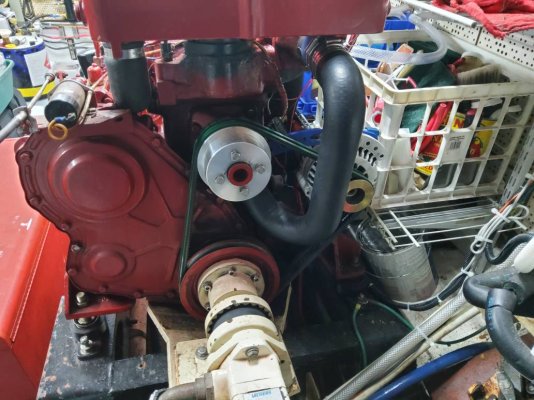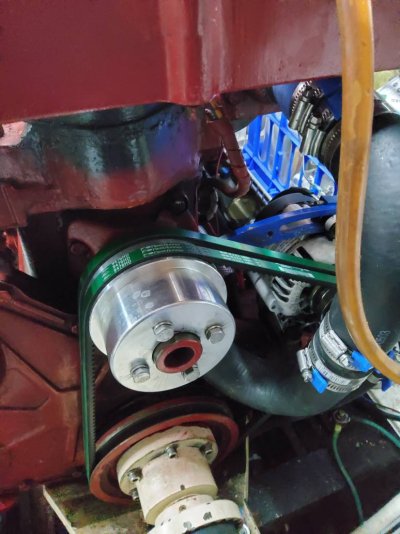rslifkin
Guru
- Joined
- Aug 20, 2019
- Messages
- 8,015
- Location
- Rochester, NY
- Vessel Name
- Hour Glass
- Vessel Make
- Chris Craft 381 Catalina
You should be running industrial V belts. Sometimes they are called green stripe belts. They are much stronger and last longer.
I had a double V bely pulley mounted to the front pulley for a hydraulic thruster. It used a matched pair of industrial belts. The pair lasted 10 years and was fine when I sold the boat last summer.
I too question the serpentine system without a tensioner. Maybe it works fine, I would just question that.
Best of luck however you decide.
One catch to that. The Gates Green Stripe belts don't come in anything smaller than 1/2" width. If an engine uses 3/8" or 10mm belts (like mine), you're stuck with the standard grade belts (but buy good ones like Gates, Continental, etc.)




